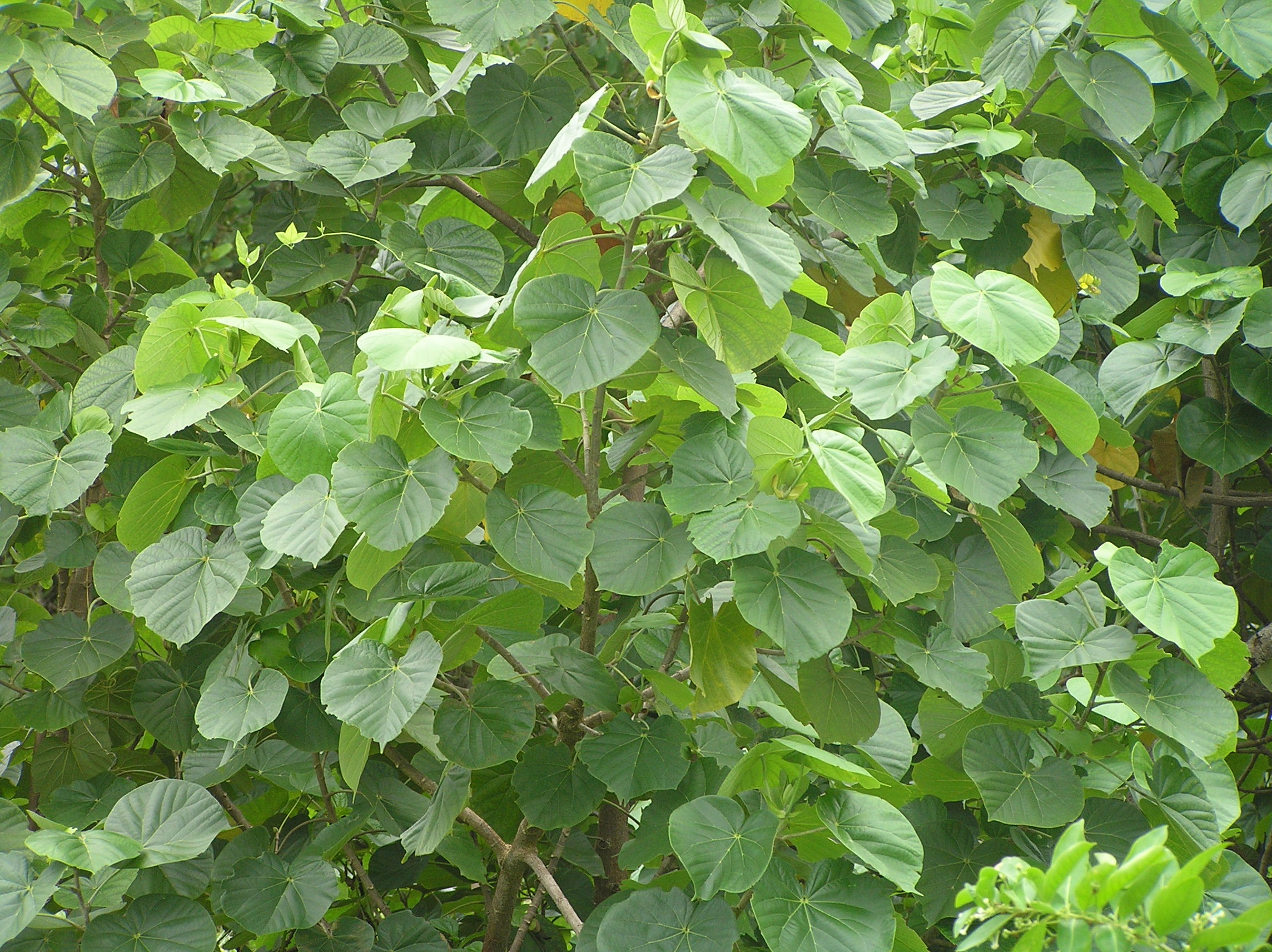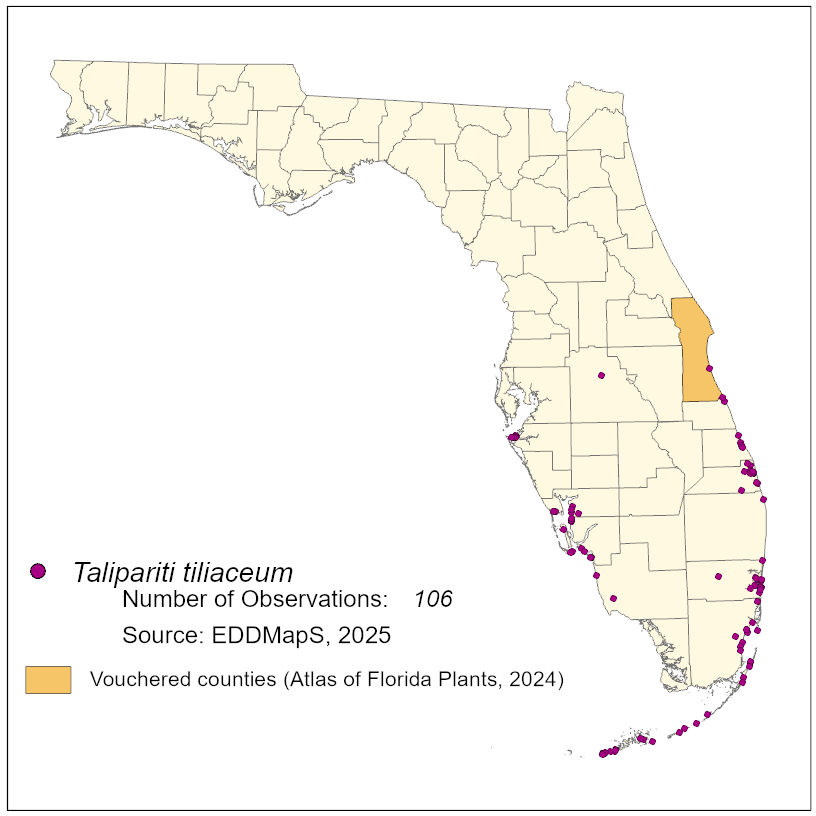Common Name: sea hibiscus, mahoe
Family: Malvaceae
Common Synonyms: Hibicus tiliaceus
USDA Hardiness Zone: 10a-11
Growth Habit: Tree or shrub
Origin: Tropical Asia and America
FISC Category: 2
FDACS Listed Noxious Weed: No
Introduction Date: Unknown, but herbarium specimens date back to the 1930s
IFAS Assessment:

Shrub or tree, evergreen, 4-10 m tall and wide, bark gray-white. Leaves alternate, blade nearly orbicular to broadly ovate, 8-15 by 8-15 cm, leathery, green, abaxially densely gray-white stellate puberulent, adaxially very sparsely stellate scaly, glabrescent, basal veins 7 or 9, base cordate, margin entire or obscurely crenate, apex abruptly acuminate, petiole 3-8 cm long. Inflorescence a 1- to few-flowered cyme, terminal or axillary. Flower stalk 1-3 cm, with 1 pair of stipulelike bracteoles at base. Calyx 1.5-2.5 cm, connate proximally for 1/4-1/3 of length, lobes 5, lanceolate, stellate puberulent, persistent. Corolla yellow with dark purple center, campanulate, 6-7.5 cm in diameter, petals obovate, 4-4.5 cm, yellow stellate puberulent abaxially. Filament tube ca. 3 cm, glabrous. Style branches 5, slender, with glandular hairs. Capsule subglobose to ovoid, ca. 2 cm, obscurely beaked, densely fascicled-hirsute, valves 5, woody. Seeds reniform, smooth, glabrous (Flora of China).
Disturbed coastal areas
NA

NA
Dave's Garden. 2014. PlantFiles: Beach hibiscus, Talipartiti tiliaceum. http://davesgarden.com/guides/pf/go/54454/#b. Accessed on June 23, 2014.
Flora of China. Volume 12, page 288. http://efloras.org/florataxon.aspx?flora_id=2&taxon_id=200013733. Accessed on June 23, 2014.
Langeland, K.A., J.A. Ferrell, B. Sellers, G.E. MacDonald, and R.K. Stocker. 2011. Integrated management of non-native plants in natural areas of Florida. EDIS publication SP 242. University of Florida, Gainesville, Florida.